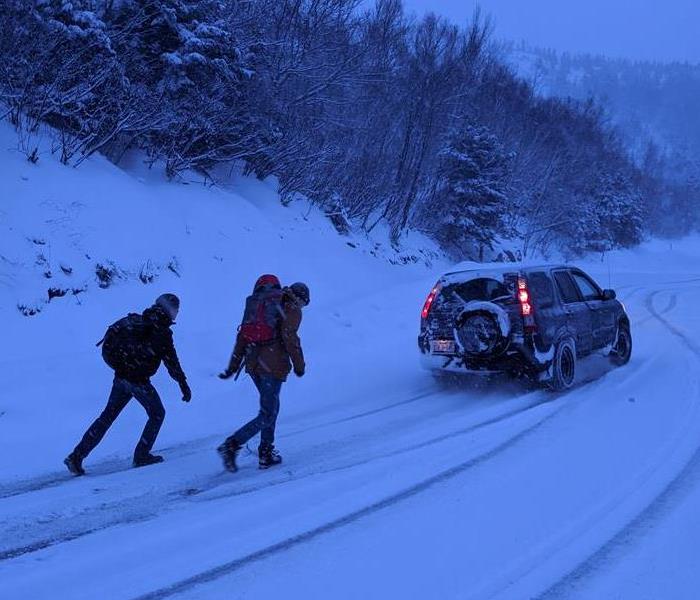Here's What You Need in Your Winter Car Emergency Kit if You Get Stranded in a Snow Storm
12/1/2021 (Permalink)
For the drivers in your family, including yourself, a winter car emergency kit is a must-have. Winter weather may leave you stranded, but having a well-stocked emergency pack can help you get back on the road, or at the very least make the time you wait for help safer and more comfortable.
- Booster cables for batteries. You'll need these if you have a dead battery or if you need to assist someone who has a dead battery. A portable jump starter, on the other hand, is simple to use and effective, but it must be kept charged while on the road.
- Ice scraper. In the snowbelt, every car should have an ice scraper and a brush. Scrapers are usually included in the kits for a low cost. It is preferable to include a snow brush/scraper that makes cleaning snow prior to travel much easier. It is the law in several areas to clear your automobile of all snow. Even if it isn't, it's just good manners to keep your blowing snow from obstructing another driver's eyesight.
- Portable Shovel. These are useful for digging out a car that has been buried by plows or stranded by the side of the road, as well as creating space around a tailpipe for lengthy idling to avoid pollutants from entering the vehicle. A collapsible shovel is included in most kits. (The shovels are available in various sizes and strengths.) If you've ever had to dig your car out, a full-sized shovel may be necessary, as tiny shovels can be tough to handle on larger operations. Additionally, have a bag of sand in your trunk to aid traction.
- Handy Items. The majority of kits feature a flashlight, and some also include a warning cone to alert approaching traffic of your presence. For that flashlight, bring extra batteries. Roadside triangles should be included in every pack, and some come with a reflective safety vest.
- A basic first-aid kit. Most emergency kits include a section for the minimal necessities, such as bandaging a tiny cut. Add items that are unique to your health needs, and keep in mind how temperature can alter medications.
- Charger for cell phone. A cell phone charger is a useful thing to keep in the car, especially during the winter and on road trips, because almost everyone nowadays has a smartphone hooked to their hip.
- Other items that are common. Gloves, a blanket, a rain poncho, wipes, and rags can all help you stay clean while also protecting you from the weather. Keeping a pair of boots and a cap in the car is a good idea, especially if you frequently drive in icy conditions.
- Strap for towing. A strap is a simple item that can be quite useful if you ever need to be hauled out of a ditch. Before you use the strap, make sure you know how much weight it can tow (reliable straps will have that information printed on the label) and how to tie it to the proper portion of the automobile. Read your car's owner's manual for tips on how to use a tow strap, such as how to utilize a detachable tow hook with a tether.
- A fire extinguisher. It's useful if you need to put out a little fire, but if your automobile is on fire, back off and call for help. If you buy a fire extinguisher, check sure it's designed for use in cars.
- Items to deal with a flat tire. Some kits include an aerosol can of tire sealant that can be used to temporarily repair a punctured tread. These products are not intended for big punctures or tires with sidewall damage, and they may not perform effectively in extremely cold conditions (see the directions). If a spare tire is available, use it, or ask for a tow from roadside help.
What do you have in your car emergency kit?






 24/7 Emergency Service
24/7 Emergency Service
